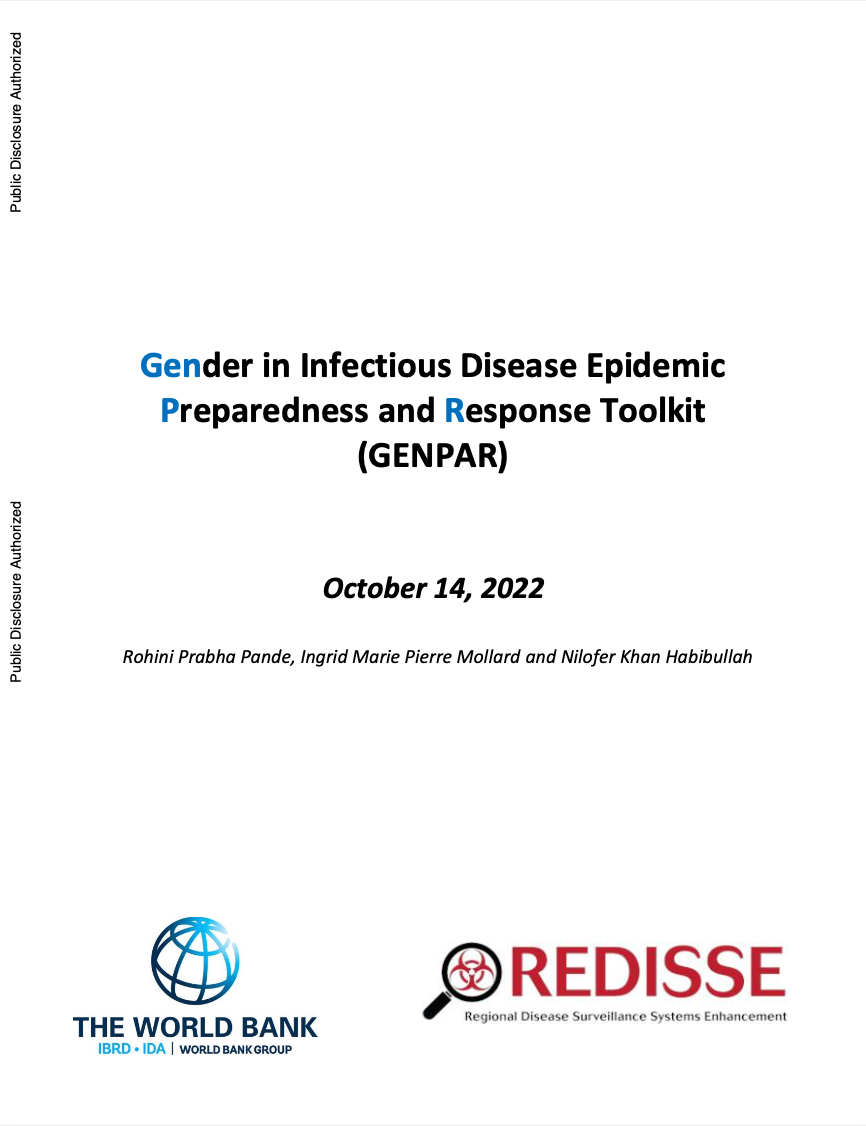The COVID-19 pandemic refocused the world to the lack of attention to gender gaps and gender-related vulnerabilities in the face of epidemics. However, while research dating back to the HIV/AIDS pandemic and earlier has documented what are the gaps and what needs to be done, there are fewer examples of tools on HOW to integrate gender into prevention, preparedness and response for infectious disease epidemics. The World Bank Group’s GENPAR (Gender in epidemic Preparedness and Response) Toolkit aims to fill this gap.
Both biological sex differences and social gender differences can result in gender-differentiated risks, exposure, infection and outcomes of infectious diseases, including epidemics. If these differences are not integrated into measurement and reporting of symptoms and alerts to track infectious diseases, they will not be incorporated into planning for prevention, preparedness and response (PPR). This lacuna, in turn, results in incomplete planning, programming and targeting of PPR actions, and thus ineffective and inefficient control of outbreaks such that persons of the disadvantaged gender have inadequate access to health and other services. PPR then does not reach the entire population at risk. Effective PPR also necessitates addressing gender gaps in human resources. Across gender, people are resources. If women are not engaged in PPR, these experiences and knowledge are not fully exploited for effective PPR. GENPAR, or the Gender in Infectious Disease Epidemic Preparedness And Response Toolkit, is a set of benchmarks and tools to integrate gender into select core capacities of the International Health Regulations (IHR) 2005. GENPAR provides a set of actions (WHAT to do) as well as a range of tools (HOW to do it) to achieve each benchmark in integrating gender into the preparedness and response capacities covered by the toolkit. Using GENPAR, gender can be integrated into selected capacities step-by-step. It is necessary, however, to select an appropriate level based on current levels and not seek to jump levels.
Pande, Rohini P.; Mollard, Ingrid Marie Pierre; Lnu, Nilofer Khan Habibullah (2022) Gender in Preparedness and Response Toolkit (GENPAR) (English). Washington, D.C. : World Bank Group






